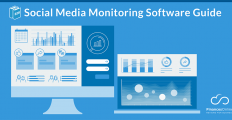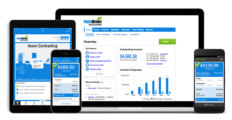It takes some time to really optimize your whole employee onboarding process. There are nuances in every pain point and there seems to be no singular way to do it. However, there are general principles that always apply. In this article, we are going to discuss some general principles and best practices gathered from our experts and HR researchers, and practitioners to provide you with a useful guideline for effective employee onboarding. Furthermore, we have included a few checklists for reference when you make your own.

Effective Tips for Employee Onboarding:
- Onboarding vs Orientation: A Quick Word
- Day Zero: ‘The Plan’ and the ‘e-Welcome Pack’
- Day One: The ‘Welcome Pack’ and ‘Orientation’
- Week One: Buddy/Mentor System and Training
- Months One to Three: Feedback Sessions
- Month Three to Year One: Relational Onboarding and Alignment
- Roadblocks to Effective Employee Onboarding
Truth be told, not every company out there is an expert in managing human resources. In 2018, 22% of people who quit their jobs cited poor career development to be the main reason for separation. Also, 12% cited problems with work-life balance pushed them out the door.
Furthermore, 9.6% cited poor compensation and benefits while 8.4% quit in order to improve their well-being and 8.1% quit because they were not enjoying their jobs. Moreover, 5.2% blamed their work environment including the physical surroundings and culture.
Career development Work-life balance Manager behavior Relocation Compensation and benefits (rewards promised and received) Well-being (physical, emotional and mental) Job (enjoyment and ownership of work) Involuntary separation (layoffs or terminations) Retirement Work environment (physical and cultural surroundings) Source: Work InstituteWhy People Quit Their Jobs (US, 2018)
Career development: 22.2
Work-life balance: 12
Manager behavior: 11.3
Relocation: 10.2
Compensation and benefits (rewards promised and received): 9.6
Well-being (physical, emotional and mental): 8.4
Job (enjoyment and ownership of work): 8.1
Involuntary separation (layoffs or terminations): 6.7
Retirement: 6.3
Work environment (physical and cultural surroundings) : 5.2
Many of these reasons intertwine with one another. This involves how employees are trained and treated in a company. And everything starts with onboarding. A study points out how employees are often overwhelmed by information during the onboarding process.
Clearly, employee onboarding best practices come into play when you wish to keep the turnover rate low and worker productivity high. This is something that every thoughtful HR manager or professional should aspire to optimize.
1. Onboarding vs Orientation: A Quick Word
Simply put, employee onboarding is the process of introducing employees to their new jobs. It acquaints employees not just only with the organizational goals, rules, and policies but also with the organizational culture. There are many factors that employers fall short of in making a successful run at this. Some researchers blame organizations for being too focused on outcomes rather than the needs of new hires. Others point out that employees are usually under a great amount of stress. This is a recipe for onboarding disaster.
Contrary to what others may feel, employee onboarding is more of a marathon than a sprint. This is very apparent in the famous onboarding vs orientation debacle. Some people confuse them both. As a result, they don’t do any one of them particularly correctly.
Orientation refers to a single event where employees quickly learn about their new company, colleagues, peers, and responsibilities. It is basically just a part of the whole onboarding process. A good orientation session can involve a video presentation, a PowerPoint presentation, an open forum, snacks, a social and a tour. A good onboarding process involves a good orientation session.
Orientations, as the name suggests, serve “to orient” new employees to their new surroundings, the behaviors that are expected of them, and what to expect to get in return. So, if onboarding is the start of the whole employee management processes, employee orientation can be thought of as part of the start of onboarding. Orientation usually just covers Day 1 and paperwork.
2. Day Zero: The ‘Plan’ and the ‘e-Welcome Pack’
The employee onboarding process starts before Day 1. Firstly, you should have everything planned out from your welcome email, orientation, a buddy/mentor system, training schedule, and regular feedback sessions. This should cover the time before Day 1, the first day itself, the first week, the first month, and the next two or so. You should have a tight program and have a team to run this tight ship with. So, the first thing that you should include in your employee onboarding checklist is ‘the Plan.’
The Plan Checklist
- Onboarding team: a dedicated HR staff overseeing onboarding activities
- Day Zero: what to include in the e-Welcome pack, Day One logistics, and the employee contract
- Day One: itinerary of the tour, orientation, socials, employee signing
- Week One: the setup of a buddy/mentor system
- Month One: weekly feedback sessions up to the third month
- Year One: how to align employee personality and career goals with the organization’s objectives, goals, and culture
It is in this plan that you will map out what will the interactions be like once you decide to hire the employee. Obviously, you already have this as an HR professional. We surmise that you already have a good HR software.

You can automate many aspects of your onboarding process with HR software like BambooHR.
With these in order, you can start your employee management program and add in new details. That is to say, that you should include your new employee onboarding objectives. Check out this guide on how to leverage an HR tool for employee onboarding.
The guide is for BambooHR users but it is applicable to any HR platform with the same robust capabilities. BambooHR is a top-notch platform that we highly recommend.
If you want to investigate the features closely you can easily do so when you sign up for BambooHR free trial here.
The e-Welcome Pack Checklist
Secondly, it’s best to send a welcome email with useful information embedded and attached. This will serve as your “e-Welcome Pack.” Think of it like a brochure or an infographic that contains useful information including your company’s history, values, key personnel, and objectives. Furthermore, this should include Day One logistics such as parking, who to find, dress code, things to bring, and the itinerary.
- Warm welcome email
- Infographics/brochure about company profile, history, key personnel, values, and culture
- Day One itinerary
- Guest Parking
- Dress Code
- Contact person(s)/number(s)
- e-Copy of contract
Also, be sure to include a WIIFM (what’s in it for me) angle on the e-welcome pack itself. Primarily, this should include a copy of the relevant paperwork they are to sign. You want your new hires to know what they are in for. Sitting them down on Day One may not be enough for them to digest the whole deal. This saves you time and enables you to address issues and clarify things better. Furthermore, you should include what is expected of them and the rewards they should expect relative to their roles.
Moreover, be sure to check back on your emails often or just stay on top of notifications. New hires may have many questions, especially on compensation, benefits, and responsibilities. You don’t want to leave them hanging on the onset. Instead, you want to put the best foot forward and create an enjoyable touchpoint between new employees and the company.
3. Day One: The ‘Welcome Pack’ and the ‘Orientation’
Now, you have reached Day One. Your new hire arrives in the building and meets up with your onboarding personnel after a no-hassle interaction with the receptionist. One of the best ways to ensure that this goes well is to have new employees names registered with the receptionist. Also, it would be better for them to receive the welcome pack then and there. This welcome pack should include most of the things listed below.
The Welcome Pack Checklist
- A hard copy of employee manual (with company directory)
- A hard copy of Day One itinerary
- ID cards
- Parking Pass
- Building Keycard (if necessary)
- Company merchandise (e.g. mug, shirt, pens, food coupons/pass, etc.)
- Building/office rules and policies
It would be nice if you could include company merchandise items such as shirts or pens. You would induce a sense of belongingness. New employees would also enjoy a food pass for the day or food coupons for the week. Nothing spells welcome than free meals on the company premises. This would also be better if you have a group of new hires coming in. They will socialize over meals and if there would be tenured staff present from their respective departments, it’d be best. This should be included in the Day One Socials but there are many other things that should happen on the first day. Yes, that is orientation.
The Orientation Checklist
- Building/Office Tour
- Contract Signing
- Orientation Outline
- Media Presentation (video or slides)
- Socials/Lunch
- Instructions for Training Schedule
- Assign buddies
- Work technology
The first thing you need to do when new employees arrive is to give them a tour around the building and the office. Of course, be sure to let everyone know that there will be new people coming in and that they should expect. In this way, employees will be primed to be more cordial when they see them. Also, this tour should include informing new hires with the building/office rules include in their welcome packs. Furthermore, be sure to be open to many questions.
The last leg of the tour should conclude near an office or space where they can sign their contracts. There should also be a place where members of the onboarding team can address issues and questions one on one and private. When done with the signing, you can proceed to the orientation. This session can include video presentations about the company, a slide presentation about their roles, rules, and the behavior that is expected of them. Also, make sure that whoever is presenting them has an infective positive attitude. This can boost new hire morale and make them feel to be a part of a venture bigger than themselves. It is also the time to introduce them to productivity tools and other workplace technologies.
To Work or Leave Early on Day One?
After orientation, many companies pull their new hires right in the action. There are arguments for and against this. The experts we have are somewhat torn on this issue. This is because there really isn’t a right way to do this.
In some industries, a hands-on approach is called for right away. Employees are expected to create value on the spot for the company on the first day. There may be justifications for this for certain situations. However, do consider that you can leave your new hires a little bit hanging and fresh. Get the excitement of starting work to a fever pitch before letting them do so. In this way, you can let them breathe easy for the first day and give them a chance to come in more calm, cool, and collected the next time. This is why some of our experts recommend jumping on to socials after the formal orientation session.
During the socials, new employees can bond with tenured ones and be relaxed. Some of them can play the role of buddies for the new hires. We’ll get more into this in the next section. They can first meet over lunch. Let them have candid talks and get their guards down a little bit. Once lunch is over, you can give new employees their training schedules and instructions before letting them leave early. Get them excited and get them ready to work on their “real” first day.
4. Week One: Buddy/Mentor System and Training
New employees tend to have no idea of how to put new orientation and even training information in the right context. However, tenured employees do. This is why many firms out there are now offering a ‘buddy system’ to put everything into context.
Also, this provides new hires with a better onboarding experience. Some recommend that new hires get to meet their buddies on Day One. This is understandable. Some HR experts feel the same way.
Furthermore, buddies are not to be confused with mentors. But, lines can be crossed sometimes and crossing them can land you in a more fruitful future. Firstly, buddies are usually tenured employees and some off-the-cuff mentoring can happen. Secondly, sometimes, mentors become good friends.
However, at the start, it is a good rule of thumb not to mix both of their roles. But again, it depends on your company culture and the personalities of the people you handle. If you have the budget and the time, it is better to have both buddies and mentors for new hires. If not, try to have a hybrid but be careful.
Furthermore, it is best not to assign their managers as their mentors. This has the potential to throw off good working relationships and introduce unhealthy biases. It goes without saying that these buddies and mentors should be given ample training as well to fulfill their roles.
Also, they should receive extra compensation or, at the least, get some added perks. This may be costly but once you get the right mix, you can rest assured that it is a good investment.
Buddy/Mentor System Checklist
- Provide a ‘buddy’ for each employee if you can (not the manager)
- Let the buddy introduce partners with new people and guidelines
- Have the buddy have daily and a weekly check-in with the new hires
- Provide a ‘mentor’ for a small group of employees (with similar jobs)
- Have the mentor check-in weekly, bi-monthly, or monthly with new hires
- Provide buddies and mentors with tips on how to assimilate new hires into the organization
- Let the relationships work out organically
- Provide buddy and mentor training programs
Also, once training is underway, you need a constant feedback program much like the in-training performance assessments that companies make. These feedback programs are usually a staple in good HR departments. HR managers and staff meet with trainers, managers, staff, and trainees in order to gauge the effectivity of programs and the health level of personal relationships.
However, meeting with staff can take time. Also, other people are shy when you get them in a face-to-face conversation. This is why digital tools such as an enterprise social networking platform can be of use. Employees can report and comment anonymously on policies, events, and many other things.
5. Months One to Three: Feedback Sessions
Just like the buddy/mentor system, the onboarding team also needs to get feedback from new hires. Most of the time, people can’t seem to shoot straight especially when they feel or think something negative about the company or people in there with colleagues. An objective feedback system can open the door for more honest feedback. Honest feedback is important when you want to improve the key facets of your onboarding and HR processes accurately. There is just no way to get around honest reports and you need to conduct feedback sessions regularly to get them.
Feedback Sessions Checklist
- Conduct regular feedback sessions and performance reviews in healthy intervals
- Organize schedule in e-calendars and share with employees
- Send notifications for upcoming feedback sessions
- Thank employees personally and digitally after participating with sessions
- Prepare to ask tough questions to get to the heart of issues
- Be prepared to be shocked with honest answers
- Compile answers and be ready with analyses
- Be sure to address concerns promptly according to priority
Performance reviews are always done on a yearly or bi-yearly basis. This is really not enough to key in on the pulse of what’s going on within departments and internal relationships that affect the organization’s productivity. Furthermore, new employees spend more time on getting used to the whole dynamics. Correcting relationships and policies may be too late when you don’t get fresh information every now and then. This is why HR sessions and performance reviews should be done more frequently for all employees; and, even more frequently for newer employees. When new problems arise, you better nip them from the bud.
6. Month Three to Year One: Relational Onboarding and Alignment
Usually, employee onboarding in firms takes about three months or less. Other experts though recommend that this should last for a year. This stems from two different ways of looking at onboarding: transaction and relational. The former casts onboarding very simply. It is just there to get new hires up to speed and operational. There is nothing else but the business transaction.
The relational view is not totally opposed to this. However, proponents see the transactional part to be at the bottom of the totem pole. Onboarding should not just get your employees to understand their roles, reward, and punishments.
It should also integrate them into the company’s cultural structure through productive relationships with colleagues and superiors.
Relational onboarding takes long. This is because good relationships take long to settle and to nourish. This is why it typically lasts a year. Again, this really depends on what the firm you are a part of and for what role you are filling. If you are looking for another cog in the machine, this may be costly for you. If you are hiring knowledge workers, this might be the best direction for you.
Practical judgment will go a long way. But if you think it is appropriate, and you have the budget and means, this is a more promising approach. Finally, in essence, this should be done to align personal employee goals with those of the company.
Career Development and Alignment Checklist
- Regular performance reviews and feedback sessions
- Career and competency mapping plan
- 1-year plan creation and discussions
- 3-year plan creation and discussions
- 5-year plan creation and discussions
- Assess interpersonal relationships
- Ask for positions they like to fill someday
- Ask for contributions that they’d like to offer the company (e.g. inventions, a new product, and etc.)
- Keep secure records of private discussions
- Align personal goals with company goals
Of course, this is the tail end of employee onboarding and the funnel into a new phase. It is the last job of the onboarding team to transition the relatively new hires into another phase of the HR management program. Competencies should be mapped. Also, both lateral & upward movements should be considered. It’s time to evaluate the potentials of new hires. Also, you should make plans about how they can achieve them. You should consider using performance appraisal software to make you more effective.
7. Road Blocks to Effective Onboarding and Conclusion
Above, we have provided employee onboarding examples and checklists. But there is really no singular employee onboarding template for all firms. Again, there are just general principles that serve to guide us. So, making everything here your own may take a while.
However, we are here to help you cut down on future errors by providing you with some things that you ought not to do. Usually, organizations do a mediocre job assimilating new employees, and you don’t want to be just most organizations.
These misconceptions and unhealthy attitudes about effective onboarding programs have deep consequences. Here’s a shortlist of some devastating ones:
- Some organizations feel that HRM is unimportant and onboarding is less so
- Budget-setters and decision-makers give HRM budgets undue scrutiny
- Some professionals feel that HRM programs are costs rather than investments
- New hires are overwhelmed with new information
- Organizations have a limited view of onboarding concentrating on just “compliance”
The 4Cs of Employee Onboarding
A more sophisticated view of employee onboarding should be adopted if we want to level up our HR performance. An effective employee onboarding process involves three important functions.
Firstly, it prevents high turnover. Secondly, it increases job satisfaction. Thirdly, it improves employee performance. It also has four vital blocks: Compliance, Clarification, Culture, and Connection.

Your Onboarding Should not Be All about Compliance
Compliance is really the most basic block of onboarding. Actually, it is what most organizations refer to as onboarding. It is all about reviewing the rules and regulations. These can be of the legal kind or the internal policy kind.
Most often than not, this is the end-all-be-all of onboarding for companies. This should not be the case for you.
As discussed, onboarding takes time and covers many things other than just transactions and compliance. Also, it takes a lot of effort into making an effective onboarding program.
It takes time to build competency, relationships, and a bright future for the company. Also, onboarding long term customers can also use this very same approach.
There’s help from onboarding and HR software solutions, of course, like BambooHR as mentioned. Better yet, you can test-drive the software to see if this works like you do when you sign up for BambooHR free trial here.

























Leave a comment!